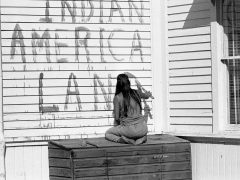World War I
“Bringing it Home”, The London Charivari (1916) This source is a political cartoon published in the London Charivari satirical magazine in 1916, a month before Woodrow Wilson’s reelection and the entrance… Read more »
“Bringing it Home”, The London Charivari (1916) This source is a political cartoon published in the London Charivari satirical magazine in 1916, a month before Woodrow Wilson’s reelection and the entrance… Read more »
Photographs and illustrations are helpful in visualizing what economic inequality looked like from 1880 to 1950. From these primary sources, we can see how people on both sides of the… Read more »
The mentions of wealth among the following primary sources created from 1880 to 1950 demonstrate a number of perspectives on wealth inequality. Room at the Top: or, How to Reach… Read more »
The following sources each contain a perspective on poverty in relation to wealth inequality in the United States between the years 1880 and 1950. How the Other Half Lives: Studies… Read more »
Primary Sources: Burgoyne, Arthur. Homestead: A Complete History of the Struggle of July 1892, between the Carnegie Steel Company, Limited, and the Amalgamated Association of Iron and Steel Workers. Pittsburgh,… Read more »
Jacob Riis. “How the Other Half Lives”, Photo Collection, 1890 Throughout the years following the introduction of tenements for housing immigrants and domestic families the social unrest began to rise. The catalyst… Read more »
Primary Sources: Behm, Hans, photographer. State Street, south from Lake Street, Chicago, Ill. Chicago, Illinois United States. [Between 1900 and 1910] Photograph. https://www.loc.gov/item/2016813804/. Harvard Business School. The cost of living… Read more »
This project will explore the establishment, preservation and usage of the United States National Parks Service and specifically, the role of two influential men, Theodor Rosevelt and John Muir. Additionally,… Read more »
Early History of Native American Oppression (1877 – 1900): An Act to Provide for the Allotment of Lands in Severalty to Indians on the Various Reservations (General Allotment Act or… Read more »

Chavers, Dean. “Alcatraz Is Not an Island.” This source is an interview with Native American activist, Dr. Dean Chavers. Dr. Chavers was one of the first activists to occupy Alcatraz… Read more »
Yosemite Act (1864) Abraham Lincoln himself signed this bill into law on June 30, 1864 making Yosemite Valley a public land to be enjoyed by all Americans. Abraham Lincoln was… Read more »
Petition to House of Representatives (1893) On January 2, 1893, John Muir wrote a petition to the House of Representatives begging them to save the ecosystem in Yosemite and declare… Read more »
Away from the Cares of State – President Roosevelt Ready to Enter Yellowstone Park (1903) This photograph of Theodor Rosevelt on horseback was taken on June 11, 1903 in… Read more »
An Act Establishing Yellowstone as a public Park (1872) This act was created by President Ulysses S. Grant on March 1, 1872. The declaration is officially titled “An Act to… Read more »
Primary Sources An Act to make Yellowstone a National Park. Ulysses S. Grant. 1872. “Away from the Cares of State – President Roosevelt Ready to Enter Yellowstone Park”. 1903…. Read more »
Primary Sources “Abuses by Corporations: The Protest of the Anti-Monopoly Conference. ” 1881.New York Times (1857-1922), Aug 19, 2. https://envoy.dickinson.edu/login?url=https://search.proquest.com/docview/93915020?accountid=10506. Alston, By P. 1944. “The Small Farmer Seeks a Place… Read more »
This museum exhibition will look at the use of propaganda in the media as a persuasion technique to either encourage or discourage the war effort throughout the 20th century. In… Read more »
I Want You for U.S. Army : Nearest Recruiting Station was World War I propaganda recruitment poster created by James Montgomery Flagg, who was regarded for his political posters. I… Read more »
“We Can Do it!” was a propaganda poster created by J. Howard Miller who was a prominent American graphic designer. Westinghouse War Production Coordinating Committee published “We Can Do It!”… Read more »
“Is This Tomorrow?” was a comic book cover that was published by Catechetical Guild Educational Society. The comic was published in 1947 and released in St. Paul, Minnesota. The intended… Read more »